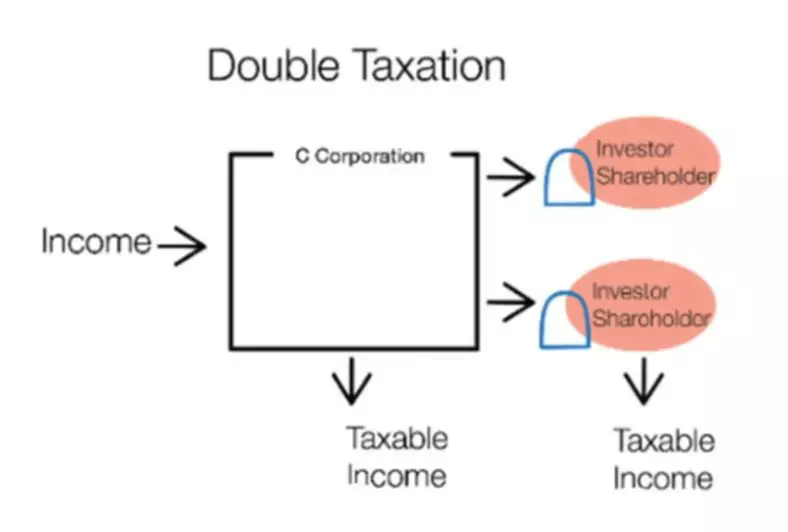Content

But in the case of unequal cash inflows the PB period can be found out by adding up the cash inflows until the total is equal to initial cash outlay. This is the simplest and easiest way to understand but it does not give us the real picture as it does not consider ther time value of money or the cash flows occurring after PB period. There is no clear-cut rule regarding a minimum SPP to accept the project. The simple payback period formula is calculated by dividing the cost of the project or investment by its annual cash inflows. This is because they factor in the time value of money, working opportunity cost into the formula for a more detailed and accurate assessment. Another option is to use the discounted payback period formula instead, which adds time value of money into the equation. One of the disadvantages of this type of analysis is that although it shows the length of time it takes for a return on investment, it doesn’t show the specific profitability.
Which method is better NPV or payback?
Net Present Value (NPV) is a better indicator than Payback Period (PBP) because it tells precisely which value would be earned by the investors if they decide to undertake it.
Managers may also require a payback period equal to or less than some specified time period. For example, Julie Jackson, the owner of Jackson’s Quality Copies, may require a payback https://www.bookstime.com/ period of no more than five years, regardless of the NPV or IRR. Payback also ignores the cash flows beyond the payback period, thereby ignoring the profitability of the project.
What Is the Payback Period?
The payback period is the expected waiting period for a business before the initial investments in any product or project are retrieved. Since some business projects don’t last an entire year and others are ongoing, you can supplement this equation for any income period.
- The modified payback period is calculated as the moment in which the cumulative positive cash flow exceeds the total cash outflow.
- Free AccessBusiness Case GuideClear, practical, in-depth guide to principle-based case building, forecasting, and business case proof.
- A variation on the payback period formula, known as the discounted payback formula, eliminates this concern by incorporating the time value of money into the calculation.
- The CAC of a customer never changes , but how much they spend can.
The definition of the payback period for capital budgeting purposes is straightforward. The payback period represents the number of years it takes to pay back the initial investment of a capital project from the cash flows that the project produces. So the discount rate was 15%, so I discount the cash flow by 1 plus 0.15, power, the year– present time, capital cost doesn’t need to be discounted. First, the project’s anticipated benefit and cost are tabulated for each year of the project’s lifetime.
What is CAC Payback Period?
In theory, payback period should include all customer acquisition costs, not just the direct ones. But attributing an activity to a customer acquisition is easier said than done. Using the example above, what happens if some of those new customers churn before 9 months? The cost of acquisition has already been sunk and so will remain the same, but the revenue side of the equation will be reduced. As a result, the payback period will increase; but for customers who remain, the payback period will have been unaffected . Cumulative cash flow for the year 1 equals the cumulative cash flow of the previous year plus the cash flow at year 1.

Initially the project involves a cash outflow, arising from the original investment of £500,000 and some project losses in Year 1 of £50,000. Payback term is minimal (6.50 years) for DASI and average (8.42 years) for FAMI. MI’s high energy yield leads to higher annual energy savings, but MI’s cost is 87.5% higher than SI, so DAMI and FAMI’s payback period is higher than DASI and FASI systems. The payback period is the amount of time it takes a business to recoup invested funds or reach a break-even point. It is particularly useful when deciding whether to invest funds in a new project.The payback period is the time it will take for your business to recoup invested funds.
5 The Payback Method
A channel with a low CAC that doesn’t produce many customers, isn’t much help. So also factor in MRR, churn, and CLTV in coming up with the perfect channel mix. The time it takes for a customer to become profitable is known as the payback period. In this guide, we’ll unpack why the payback period is important for SaaS businesses, how to calculate it and how to reduce it. So 120 divided by this difference, which is going to be 220, is going to give us the fraction of the payback period. So the payback period for this investment is going to be 3 plus 120 divided by 220, which is going to be 3.55 years.
A shorter payback period means the investment will be ‘repaid’ fairly shortly, in other words, the cost of that investment will quickly be recovered by the cash flow that investment will generate. The NPV and IRR methods compare the profitability of each investment by considering the time value of money for all cash flows related to the investment. The payback method also ignores the cash flows beyond the payback period; thus, it ignores the long-term profitability of a project. The payback period formula’s main advantage is the “quick and dirty” result it provides to give management some sort of rough estimate about when the project will pay back the initial investment. Even with the more advanced methods available, management may choose to rely on this tried and true method for the sake of efficiency. Last, but not least, payback period does not handle a project with uneven cash flows well. If a project has uneven cash flows, then payback period is a fairly useless capital budgeting method unless you take the next step of applying a discount factor for each cash flow.
So, one deficiency of payback is that it cannot factor in the useful lives of the equipment or plant it’s used to evaluate. Capital projects can include any large-scale, expensive project such as the purchase of equipment for a new assembly line or construction of a new warehouse. Each project must be proven to pay for itself while also increasing production, cutting costs, or adding other specific business benefits. Unless you’re stripping out canceled subscriptions from your payback period calculation, then churn is going to hurt it badly.
- We have to calculate the 120 divided by the difference between these two numbers, which is 220.
- Evaluates how long it will take to recover the initial investment.
- Other capital budgeting analysis methods that include the time value of money are the net present value method and the internal rate of return.
- The first investment has a payback period of two years, and the second investment has a payback period of three years.
- By the end of Year 3 the cumulative cash flow is still negative at £-200,000.
The payback period, typically stated in years, is the time it takes to generate enough cash receipts from an investment to cover the cash outflow for the investment. So again, as you can see here, the cumulative discounted cash flow– the sign of cumulative discounted cash flow changes from negative to positive between year 4 and 5. So the payback period for the discounted cash flow– discounted payback period– is 4 plus a fraction.
Free AccessFinancial Modeling ProUse the financial model to help everyone understand exactly where your cost and benefit figures come from. The model lets you answer “What If?” questions, easily and it is indispensable for professional risk analysis. Modeling Pro is an Excel-based app with a complete model-building tutorial and live templates for your own models. Free AccessBusiness Case GuideClear, practical, in-depth guide to principle-based case building, forecasting, and business case proof. For analysts, decision makers, planners, managers, project leaders—professionals aiming to master the art of “making the case” in real-world business today. The payback period is a straightforward concept to understand. Because of its simplicity, this method of evaluation is prevalent.

Mary Girsch-Bock is the expert on accounting software and payroll software for The Ascent. Successful branding is why the Armani name signals style, exclusiveness, desirability. Branding is why the Harley Davidson payback period formula name makes a statement about lifestyle. Strong branding ultimately pays off in customer loyalty, competitive edge, and bankable brand equity. It is no secret—business forecasts always come with uncertainty.
